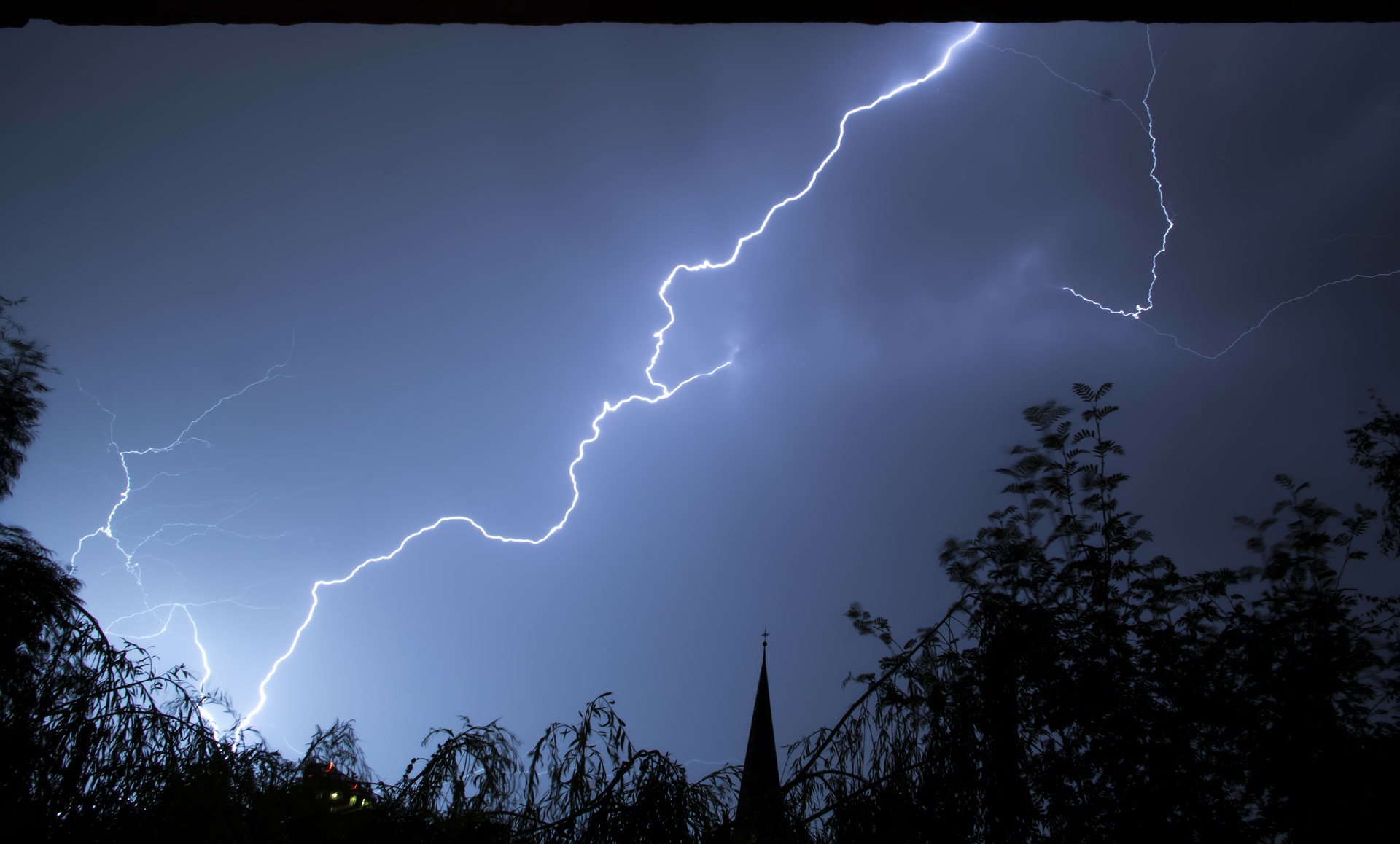Lightning Safety on the Golf Course
Aug 16th 2016

When you think of golf, you probably imagine a beautiful and expansive green on a sunny day. However, golf is one sport that isn’t always stopped by bad weather. As a matter of fact, some experienced golfers even pride themselves on being “all weather”players. While a small spattering of rain might not derail your game, lightning and thunderstorms are nothing to joke about.
Lightning is one of the top three
storm-related causes of death in the U.S., and is responsible for an average of
51 deaths each year. Five percent of these deaths happen on the golf course!
Lightning seeks “the path of least
resistance” before traveling to the ground. Since the human body is
composed largely of water, it’s an extremely strong
conductor and, unfortunately, a target. If you live in an area with frequent
thunderstorms, you are already at risk. Continuing to play golf multiplies that
risk. The National Weather Service warns that lightning is arbitrary, random,
and unpredictable.
Many golf courses in areas considered to be at risk have sirens installed to warn players of approaching thunderstorms. Find out if your course has such a system. If not, the general rule for thunder and lightning is “if you can hear it, clear it, if you can see it, beat it.”Here are some more rules to consider if you find yourself stuck in a storm.
How to Stay Safe on the Golf Course
•Always seek shelter at the first sign of a thunderstorm. Where there are rolling clouds, dark skies, raindrops, and thunder, there will surely be lightning. The sound of the course’s siren should never be ignored or taken lightly.
•Seeking shelter implies getting off the golf course if possible, even just to your car. Some golf courses may have a designated lightning shelter. It is important to note that open-sided buildings will not provide adequate protection from lightning even if they have a lightning rod.
•Never stand under a tree. Many people falsely believe that trees are a safe haven. In fact, most lightning-related injuries and casualties occur when people seek protection in the trees. Lone trees are particularly dangerous.
•Stay away from water. Water is equally dangerous. Eight percent of lightning casualties happen near a body of water.
•Stay away from your golf clubs. It’s natural to want to protect your possessions and keep them out of harm's way, especially something as expensive as golf clubs. However, the metal serves as an excellent conductor and is practically attracting lightning. They can be replaced; your life cannot.
•For similar reasons, if your shoes have metal spikes, they must be taken off.
•If you are stranded in the open, move to a low place such as a ravine or valley. If you do feel a tingling sensation and the hair on your arms begins to stand up, know what to do. Squat with your feet together, balancing on the balls of your feet, and hold your arms in front of your knees. If you are not alone, keep at least 15 feet away from all other people.
•Move away from your golf cart.
Golf
Carts and Lightning Safety
There is little information out there about golf cart safety related to
lightning. Some believe golf carts to be
safe since they have rubber tires and a canopy enclosure. Others reason that cars are safe, so
golf carts must be as well. Whatever you do, do not seek shelter in your golf
cart.
Let’s return to the “path of least
resistance”theory. Lightning
that strikes a car with its windows up will encounter a metal shell, and then exit
through the rubber tires. A golf cart is not entirely enclosed and therefore
not a protective metal shell. Most golf carts are made of fiberglass, making
YOU the path of least
resistance.
Lee Trevino himself once said, ”If you are on the
golf course or in a golf cart and a thunderstorm is approaching, hold a one iron over your head, because not even God
can hit a one iron.”All jokes aside, no
golf game is worth your life. Lightning safety is a serious matter. Being
inside or near a golf cart seriously increases your risk of injury and being a fatality.
Trees and golf carts cannot protect you. Overall, your chances of being struck by lightning are estimated to be 1 in 600,000. These tips serve to reduce that number even further. Keep yourself from falling prey to that statistic by following these simple safety precautions and remembering to head indoors and seek cover as soon as it is safely possible.
